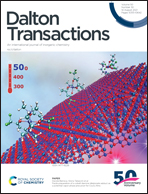Amorphous Co3O4 quantum dots hybridizing with 3D hexagonal CdS single crystals to construct a 0D/3D p–n heterojunction for a highly efficient photocatalytic H2 evolution†
Abstract
Herein, a novel amorphous monodisperse Co3O4 quantum dots/3D hexagonal CdS single crystals (0D/3D Co3O4 QDs/CdS) p–n heterojunction was constructed by a simple hydrothermal and electrostatic self-assembly method. The amorphous monodispersed Co3O4 QDs (≈4.5 nm) are uniformly and tightly attached to the surface of the hexagonal CdS single crystals. The sample, 0.5% CQDs/CdS exhibits outstanding hydrogen evolution activity of 17.5 mmol h−1 g−1 with a turnover number (TON) of 4214, up to 10.3 times higher than that of pure CdS. The enhanced photocatalytic activity can be attributed to the synergistic effect of the p–n heterostructure and the quantum confinement effect of Co3O4 QDs, which significantly promoted the separation efficiency of photo-generated electrons and holes. Additionally, the sulfur vacancy also can act as electron trappers to improve carrier separation and electron transfer. The photoelectrochemical and time-resolved fluorescence (TRPL) results further certify the effective spatial charge separation. This work gives an insight into the design of the 0D/3D Co3O4 QDs/CdS p–n heterostructure for a highly efficient photocatalysis.



 Please wait while we load your content...
Please wait while we load your content...